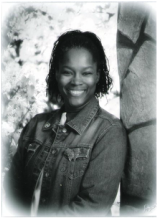Ultimate STEM
|
Karoline is a CPS middle-school science teacher who thrives to reach all students and make learning an enjoyable experience. She enjoys teaching science because she considers the world we live in is over-flowing with a wealth of knowledge; knowledge in the way things move, interact, change, and thrive.
|
The focus of the lesson was to have students observe the effects of potential and kinetic energy with an emphasis on the reiterative process in the engineering process. Students worked in teams of 2-3 people and were allowed to use whatever they wanted, with the exception of commercial kits, to create their coaster. The roller coaster was to be designed to cause a marble to travel through a path with at least one loop, one turn, and one hill. At the end of the path the marble had to jump into a cup. All students would be given the same type of marble, however, the materials to create their coaster could be different. Students first drew pictures (blueprint) of what their coaster would look like and used it as a plan to create their coaster. Once the coaster was created, they were to draw/sketch the actual coaster, label where the potential and kinetic energy were least and greatest in their model, give the maximum distance their marble jumped into the cup, make a video of their coaster in action to inform their analysis and provide a one page analysis of their experience. Most students enjoyed the roller coaster challenge, one student stated, “This year in 8th grade we really focused on energy and energy transformations which required us to work like engineers. I experienced a lot of things that may seem difficult at first, but then turned out to be easy and fun.” Though I had focused on potential and kinetic energy and the reiterative process in engineering, many other methods could have been incorporated to create this ultimate STEM lesson, such as: measuring the length of track the marble traveled; calculating the marble’s average speed by conducting trials incorporating SimCity or Roller Coaster Tycoon simulations.
Key Components of the Ultimate STEM Lesson:
- Real world application - Real world application is a vital component of any lesson because it takes abstract topics out of a textbook and gives them more tangible value.
- Hands-on exploration: By allowing students to manipulate, explore, and have sensorial experiences, they can use their own skills and background to build and create understanding.
- Flexible student-driven: Students decide how to achieve the goal of the lesson. This freedom allows students to use their individual strengths and prior knowledge to develop understanding.
- Collaborative discourse: Students are able to rely on and augment the learning of their group members, and pool their collective mental resources to better address problems.
- Cross-content integration: allows students to see how different disciplines relate to one another. Knowledge from one content area can help enhance and inform another discipline
